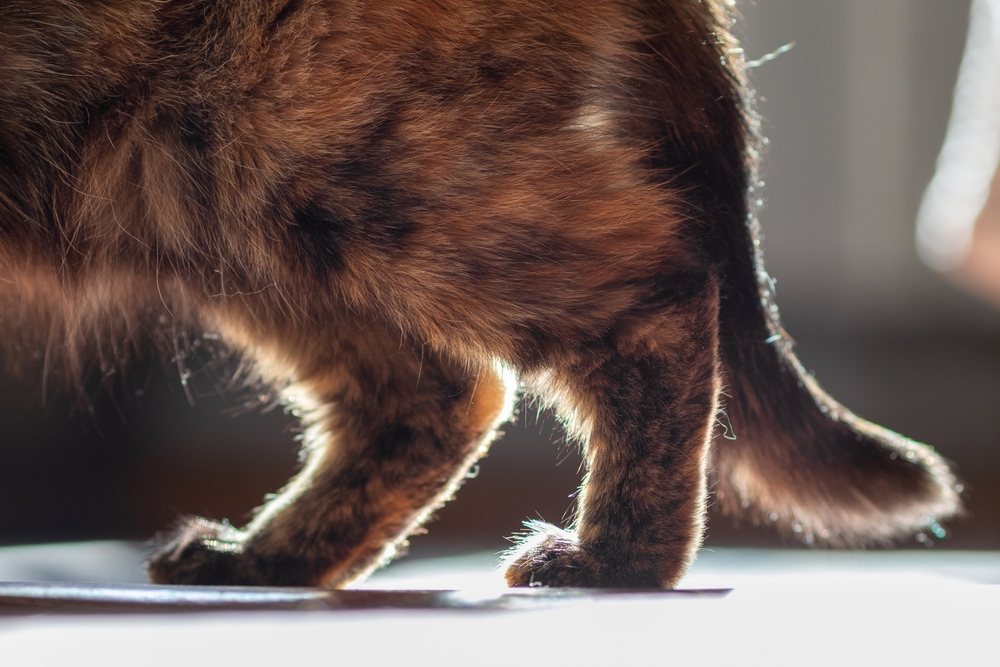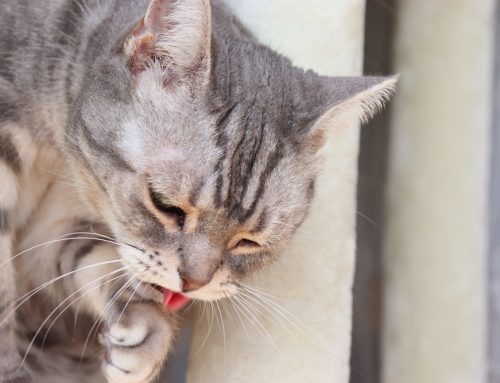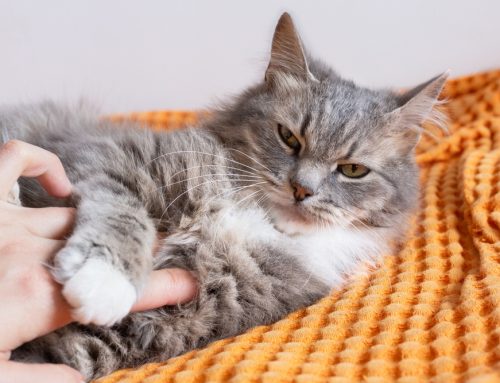Arthritis is a common condition in cats—according to one study, 90% of cats older than 12 years of age had arthritic changes to their joints that could be seen on X-rays. However, arthritis often goes undiagnosed and untreated, because cats tend to hide their pain, which makes detection difficult. To ensure your arthritic cat receives the treatment they need, our Tidmore Veterinary Hospital team offers information to help you understand the condition’s effect on cats, signs you should look for, and disease diagnosis and management.
What causes arthritis in cats?
Osteoarthritis (OA), which is the most common type of arthritis in cats, causes degeneration of the cartilage that acts as a cushion between the joints, leading to inflammation, discomfort, and secondary changes in and around the joint. Why OA occurs is unclear, but factors that may predispose your cat to the condition include:
- Age — Senior and geriatric cats are at higher arthritis risk.
- Genetics — Certain breeds are at increased risk, because they are predisposed to underlying joint problems that include:
- Hip dysplasia — Maine Coon, Persian, and Siamese cats are at higher risk for abnormal hip joint development, increasing their arthritis risk.
- Patellar luxation — Abyssinian and Devon Rex cats are predisposed to kneecap dislocation, which increases their arthritis risk.
- Cartilage abnormalities — Scottish Fold cats are prone to severe arthritis in multiple joints, because the breed is commonly affected by a cartilage abnormality.
- Injury — Fractures, dislocations, and soft tissue injuries in and around a joint can cause abnormal joint conformation and lead to arthritis.
- Obesity — Extra weight places excess strain on a cat’s joints, plus fat cells produce a chronic, low-grade inflammation throughout the body that exacerbates the condition.
- Acromegaly — Older cats can develop a pituitary gland tumor that secretes too much growth hormone that may lead to secondary arthritis.
How is arthritis recognized in cats?

Most people associate joint pain with limping, but arthritic cats rarely show overt pain signs, which may include:
- Reduced mobility — Examples include:
- Decreased jumping behavior or choosing to jump to lower surfaces
- Difficulty or refusal to navigate stairs
- Stiffness after resting
- Reduced activity — Examples include:
- Increased time sleeping or resting
- Decreased interest in playing
- Reduced interaction with people and other household pets
- Sleeping in more easily accessible areas
- Temperament changes — Examples include:
- Refusing to use the litter box because they can’t navigate the sides
- Increased irritability when handled
- Avoiding interactions
- Altered grooming — Examples include:
-
- Reduced time spent grooming, leading to a matted, scruffy coat
- Overgrown claws
- Overgrooming certain painful areas
How is arthritis diagnosed in cats?
Diagnostic tools our team uses to detect arthritis in cats include:
- History — Cats frequently behave differently in unfamiliar settings, and we strongly rely on your description of your cat’s behavior at home when deciding if they have arthritis.
- Examination — Our veterinary team watches your pet move and palpates and manipulates their joints to check for swelling and pain.
- X-rays — X-rays help us visualize your cat’s joints to determine if arthritic changes are present.
- Blood work — Since signs in cats are frequently non-specific, we often recommend blood work to rule out other causes. This information is also useful to identify liver or kidney issues that may preclude use of certain medications.
How is arthritis treated in cats?
Arthritis cannot be cured, but management techniques can reduce your cat’s pain and improve their quality of life. Arthritis is typically best addressed using a multi-modal approach that includes these treatment strategies:
- Weight management — If your cat is overweight, our team will devise a weight loss program to help them safely lose the excess pounds. Cats whose food is withheld can experience significant health issues, and veterinary consultation is extremely important when putting your cat on a diet.
- Environmental management — You can make several changes to your home to improve your cat’s quality of life, including:
-
- Providing soft, comfortable beds in easily accessible areas
- Providing litter boxes on every floor, and ensuring the box’s sides are low so your cat can easily get in and out
- Placing stairs or ramps near elevated surfaces where your cat enjoys resting
- Placing food and water bowls at floor level
- Clipping your cat’s claws regularly
- If your cat has difficulty grooming, brushing their coat frequently to keep mats from forming
-
- Medication — Many medications are available to help alleviate your cat’s pain, and our veterinary team will determine the best product for your cat.
- Supplements — We may prescribe supplements, such as glucosamine, chondroitin, and omega-3 fatty acids.
- Traditional chinese veterinary medicine (TCVM) — We may recommend TCVM, including herbal medicine and acupuncture, to help manage your cat’s arthritis.
- Surgery — If your cat’s arthritis is severe, surgery may be necessary to help alleviate their pain.
When treated properly, your cat’s arthritis can be managed to alleviate their pain and improve their quality of life. If you suspect your cat may have arthritis, contact our Tidmore Veterinary Hospital team, so we can diagnose the issue and develop an appropriate treatment strategy.








Leave A Comment